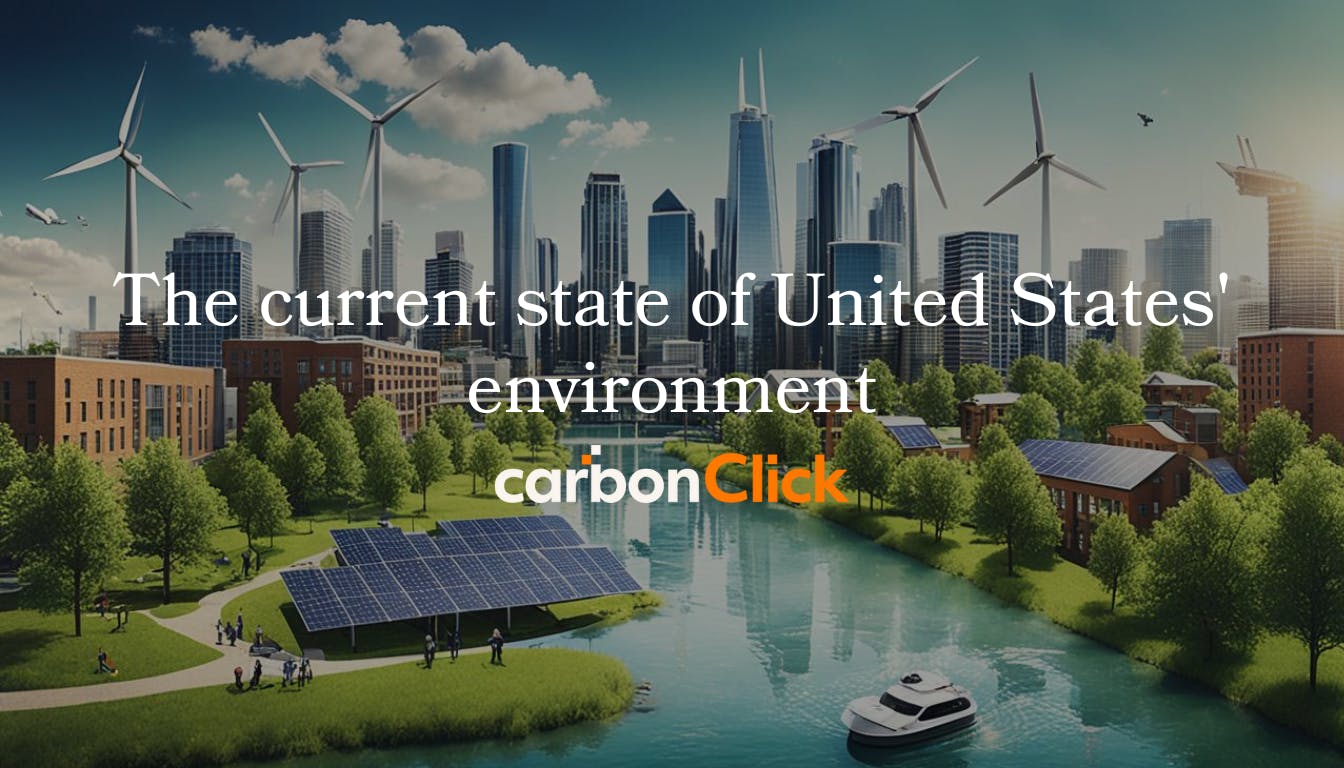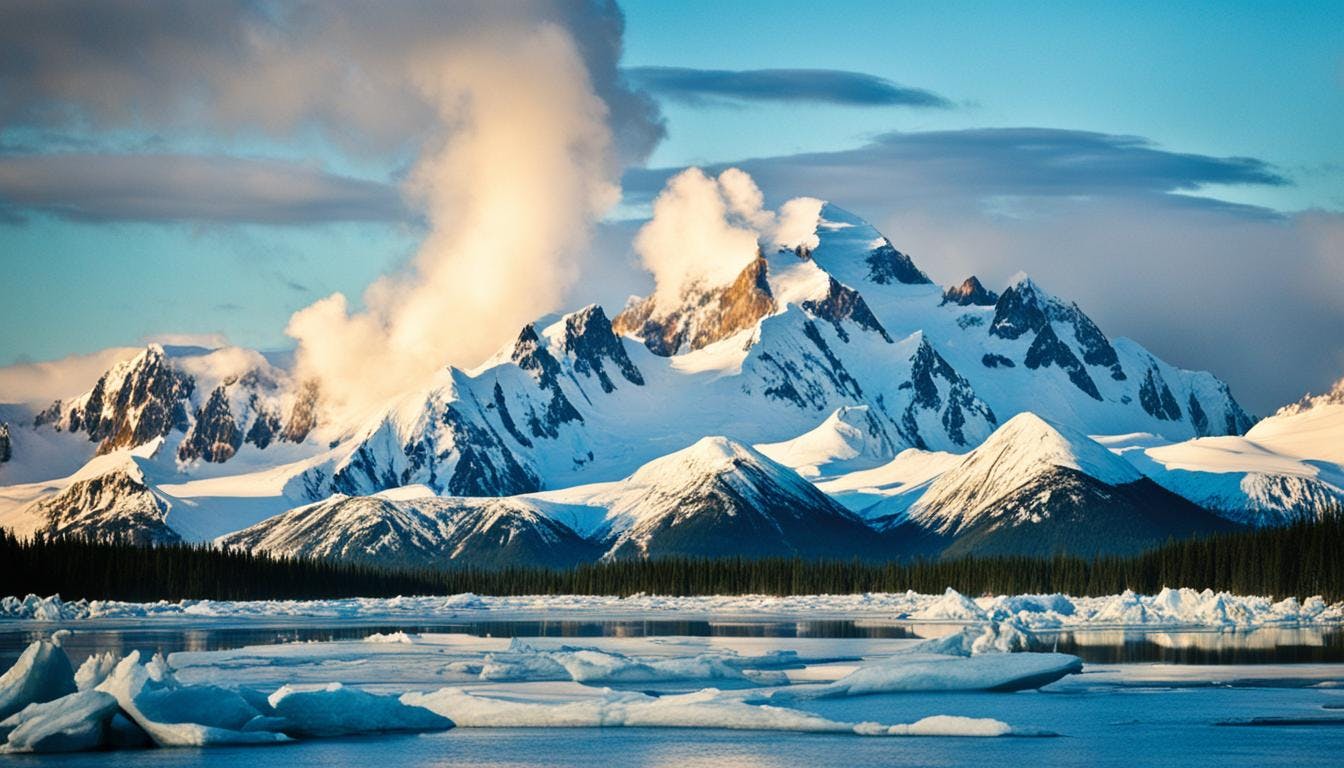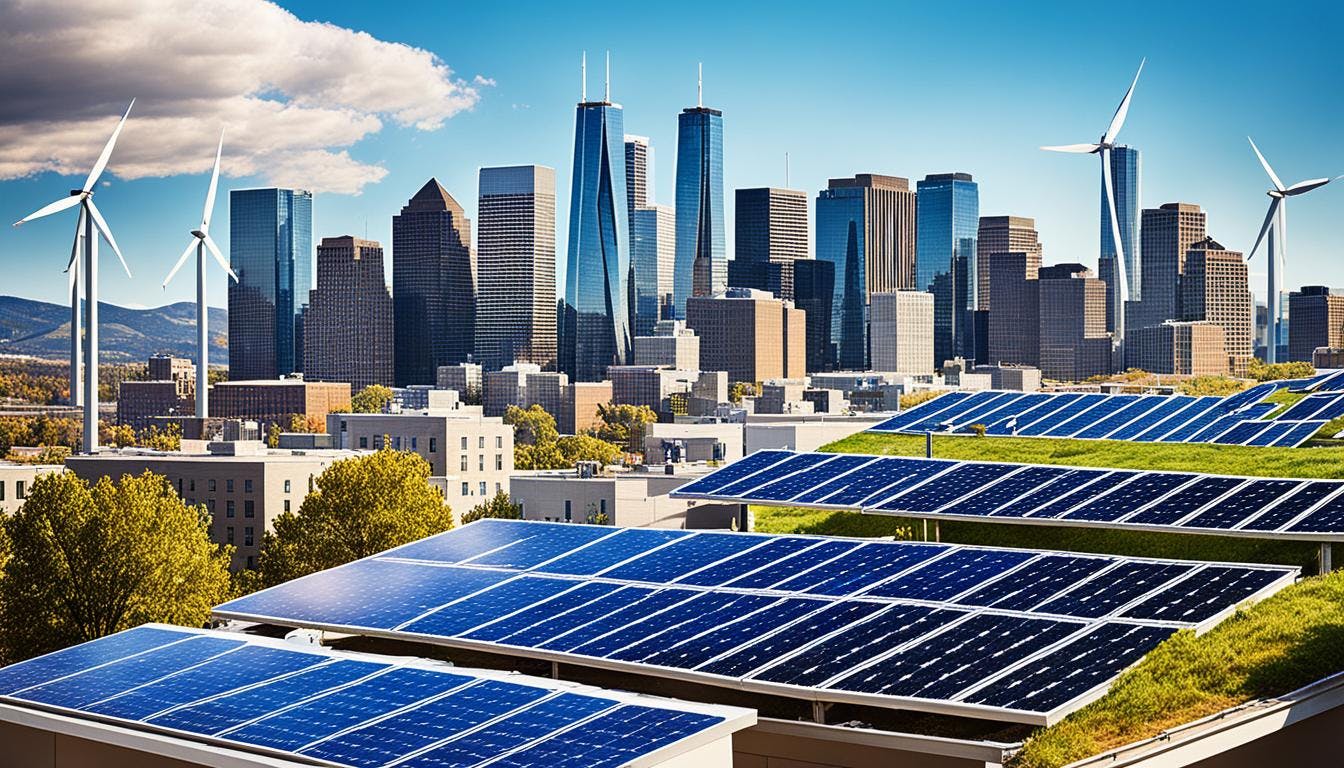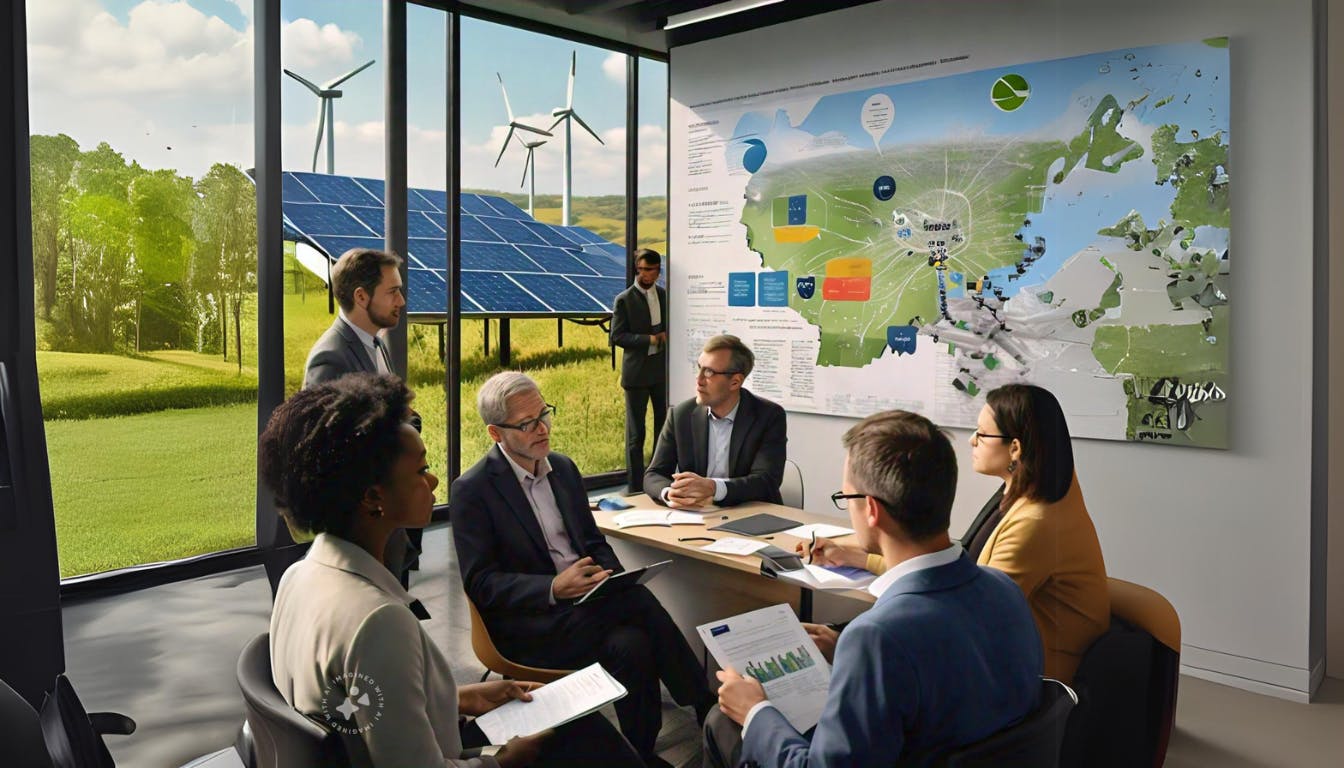Sign up. Be inspired. Get clicking.
The current state of the United States' environment
1 February 2023
Cherry trees in Washington, D.C., bloom earlier now, showing how the climate is warming. The Environmental Protection Agency (EPA) has just released a new report on climate change in the United States. This report shows how our actions are affecting the environment.
The report discusses rising temperatures, changes in precipitation patterns, and the effects of greenhouse gases. These changes are impacting ecosystems and communities across the country.
Our actions are making the climate warmer, leading to more extreme weather. This includes increased heavy rain, wildfires, and droughts. These changes are hard to ignore.

The current state of the United States' environment
The EPA is collaborating with numerous groups to monitor these climate indicators. This helps us understand how climate change impacts us and guides us in developing better climate policies. Let’s examine the state of the environment in the United States and see what these indicators reveal about our future.
Our actions are making the climate warmer, leading to more extreme weather. This means more heavy rain, wildfires, and droughts. These changes are hard to ignore.
The EPA is working with many groups to keep track of these climate indicators. This helps us understand how climate change affects us and guides us in making better climate policies. Let’s look at the state of the environment in the United States and see what these indicators tell us about our future.
Key Takeaways
- Cherry trees in Washington, D.C., are blooming earlier due to rising temperatures.
- The EPA's report highlights severe impacts from human-induced climate change.
- Increased frequency of extreme weather events is linked to elevated greenhouse gases.
- Data from the report aids in shaping comprehensive climate action strategies.
- Collaboration among various contributors keeps environmental indicators up to date.

Climate change indicators in the United States
Overview of the EPA's Fifth Edition Report
The EPA's fifth edition report covers over 50 indicators, showing the significant impact of climate change. It demonstrates that increased greenhouse gases, particularly carbon dioxide, have caused temperatures to rise and heatwaves to become more common. This leads to health issues, strains the power grid, and exacerbates extreme weather.
Key Findings from National Inventory
The greenhouse gas inventory reveals a 7% increase in US emissions from 1990 to 2014, with a decrease since 2005. Carbon dioxide, primarily from power generation and transport, is the leading contributor. Globally, emissions increased by 35% from 1990 to 2010, with carbon dioxide accounting for about 75% of that rise.
Since the industrial era, atmospheric carbon dioxide levels have been higher than at any point in the past 800,000 years. From 1990 to 2015, the warming effect of greenhouse gases increased by 37%, with carbon dioxide contributing 30% to that effect.
Impact on Ecosystems and Communities
The environmental impact assessment illustrates how climate change affects ecosystems and communities. Rising sea levels cause more coastal flooding, particularly in the Mid-Atlantic and Gulf coasts. Changes in the ocean, such as warming and acidification, threaten marine life and human livelihoods.
In Alaska, warming presents significant challenges. Thawing permafrost and melting sea ice disrupt local ecosystems and Indigenous communities, highlighting the urgent need for adaptation. Climate change also alters weather patterns, causes floods, and impacts agriculture, increasing pressure on both the environment and society.
Rising temperatures and extreme events
The global temperatures are rising, and the United States is feeling the heat. We've seen more hot days and longer heatwaves. These changes are putting a strain on our infrastructure and threatening our health.
Increasing Average Temperatures
Average temperatures in the country have been rising over the years. This increase, along with more frequent heatwaves, affects many areas. For example, the Northeast has experienced a 60% increase in heavy rainfall since the 1950s. The Midwest has faced over $49 billion in damages from flooding since 1980.
Frequency of Heatwaves
Heatwaves are occurring more frequently, making it crucial to have robust infrastructure. The National Climate Assessment indicates more heatwaves, and they are becoming more severe. We need strong climate resilience plans to protect those at risk.
Impact of Extreme Weather Events
Climate change leads to many extreme weather events, such as hurricanes, floods, and wildfires. These events are costly. For example, Hurricane Maria caused over $2.3 billion in damage in Puerto Rico in 2017. The Southeast frequently experiences power outages, affecting thousands.
Climate change exacerbates these events, making them harder to predict and more severe. The cost of these events is rising, with a projected annual cost of $150 billion in the U.S. We need to act swiftly to protect our lives and environment.


Effects on Oceans
The Earth's oceans are facing significant changes due to increased greenhouse gases, as indicated by the EPA. Ocean warming and acidification are key factors driving changes in weather patterns and threatening marine life. As oceans absorb more heat and CO2, they become warmer and more acidic. This poses a threat to marine life, as well as to the economies and communities that rely on these marine areas.
Ocean Warming and Acidification
Ocean warming and acidification are progressing rapidly due to climate change. NOAA monitors these changes using tools such as satellites, ships, buoys, aircraft, drones, and sensors. Rising ocean temperatures and decreasing pH levels are significantly altering marine ecosystems, affecting everything from coral reefs to fish populations.
This makes it increasingly difficult to protect marine ecosystems as their health deteriorates.
Impact on Marine Biodiversity
Ocean warming and acidification have a substantial impact on marine biodiversity. The EPA reports that these changes endanger the future of marine life. NOAA's data illustrates how shifts in ocean temperature, sea level, currents, and species distribution are occurring.
NOAA's Climate Vulnerability Assessments and modelling of climate impacts on marine ecosystems help identify at-risk resources and ecosystems. These assessments reveal that human activities such as drilling, mining, and plastic pollution impact nearly all ocean habitats. The United Nations' Decade of Ocean Science and efforts in ecosystem restoration aim to address these issues and safeguard marine life.
Alaska's vulnerable climate
Alaska's climate is changing rapidly, warming up more than almost anywhere else. This Arctic region is experiencing the effects of climate change profoundly. Studies indicate significant increases in temperature and considerable impacts on the environment.
Warming Trends in the Arctic
Since 1971, Alaska has experienced a temperature increase of between 2.2°F and 6.0°F. Most of this warming, approximately 75%, is attributed to greenhouse gases. By the end of this century, temperatures in Alaska could rise by 8.1°F to 14.2°F.
This warming is altering Alaska’s environment and infrastructure. The Arctic is warming, leading to substantial changes.
Impacts on Permafrost and Sea Ice
Permafrost, which covers about 80% of Alaska, is a significant concern. When it thaws, it releases methane and carbon dioxide, further increasing temperatures. Sea ice is also melting at an accelerated rate, with the lowest extents recorded in 2012 and 2020.
Alaska’s glaciers are melting more rapidly than in the past, resulting in substantial ice loss. This impacts habitats and weather patterns. The reduction of sea ice and glaciers is a major issue.
Effects on Indigenous Communities
The warming climate is severely affecting indigenous communities. Rivers are breaking up ice 7-9 days earlier than previously, and reduced snowfall results in less water and fewer resources for hunting and fishing.
Many Native villages face the possibility of relocation due to erosion and flooding. Over 30 villages may need to move, posing a significant challenge to their way of life and culture.
Urgent action is needed to support Alaska and its residents. We must develop strategies to adapt to these changes to protect Alaska’s unique environment and the livelihoods of its indigenous peoples.


The United States' climate action plan
We are deeply committed to tackling the climate crisis with a detailed US climate strategy. The Biden Administration leads this effort with a goal for a net-zero emissions economy by 2050. We aim to cut greenhouse gas emissions by 50-52% below 2005 levels by 2030.
To achieve this, we plan to make 100% of our electricity carbon pollution-free by 2035. We've invested over $390 billion in clean energy, including electric vehicles and renewable power. Additionally, we are focusing on helping disadvantaged communities, ensuring that 40% of benefits go to these areas.
Our approach to the climate crisis includes reducing emissions and collaborating internationally. We have contributed $1 billion to the Climate Fund and are seeking additional support for the Amazon Fund. We are also investing in carbon dioxide removal technologies and reducing wildfire risks.
The Inflation Reduction Act has been a significant advancement for clean energy. It provides tax credits for clean energy projects, which create jobs and support the development of new facilities. Over 580 new clean energy facilities have been planned, and electric vehicle sales have increased significantly under Biden.
Electric vehicles are a key component of our US climate strategy. EV sales have exceeded 1 million per year, and the number of public EV chargers has grown. By 2032, electric vehicles are expected to account for 67% of new car sales, which will benefit both the environment and the economy.
Our climate action plan demonstrates a strong, coordinated effort against the climate crisis. We are focusing on renewable energy, developing sustainable infrastructure, and partnering with other countries to work towards a healthier planet for the future.
Renewable energy and Carbon neutrality goals
Most adults in the United States support renewable energy, with 69% backing the growth of wind and solar power over traditional energy sources. This reflects an understanding of the need for sustainable energy to combat climate change and meet energy demands.
Public Opinion on Renewable Energy
69% of Americans want the US to achieve carbon neutrality by 2050, aligning with President Biden’s goals. Additionally, 75% support the country participating in global efforts to address climate change. This indicates a shared recognition of the climate crisis and the US's role in advancing renewable energy initiatives.
72% believe the government should increase the production of wind and solar power. Furthermore, 63% think that transitioning to renewable energy will enhance air and water quality. These figures demonstrate strong support for sustainable initiatives and a reduction in fossil fuel use.
Government Incentives for Solar and Wind Power
The US government is supporting this public sentiment with incentives for solar energy and other forms of support. Many states have enacted laws to advance carbon neutrality. For instance, California aims for 100% carbon-free electricity by 2045, and Hawaii has set a target for 100% renewable electricity by then.
Massachusetts and New York have established goals for net-zero emissions and 100% carbon-free electricity. Minnesota, Vermont, and Wisconsin have also implemented stringent policies for renewable energy. This underscores a robust state-level commitment to national carbon neutrality objectives.
Government incentives are crucial for the success of renewable energy, providing financial assistance for adoption. These efforts help reduce greenhouse gases and create jobs in the renewable energy sector, with 56% of Americans acknowledging positive employment impacts.
With coordinated efforts at both federal and state levels, the US is advancing in renewable energy and carbon neutrality. With public backing and strong government incentives, the country is poised for a sustainable and eco-friendly future.


Greenhouse gas emissions and mitigation efforts
Understanding the levels of greenhouse gas emissions in the United States is crucial for combating climate change. We must examine the strategies to reduce these emissions, with clean technology playing a central role in these efforts.
Current Emission Levels
In 2019, the top three ports in the US emitted over 2.5 million tons of carbon dioxide equivalent (CO2e). The Ports of Los Angeles and Long Beach, which handle 40 percent of US containers, produce 100 tons of smog daily. This is equivalent to the pollution generated by six million cars in Southern California.
The primary pollutants from ports include particulate matter (PM), nitrogen oxides (NOx), sulfur oxides (SOx), carbon monoxide (CO), and hydrocarbons (HC).
Strategies to Reduce Emissions
Ports are implementing measures to reduce emissions. At the Port of Baltimore, changes and new equipment reduced emissions by 19 percent from 2012 to 2016, despite increased cargo volumes. The Port of Savannah's switch to electric equipment saved over 5.5 million gallons of diesel, reducing emissions by the equivalent of removing 12,000 cars from the road.
Shore power for ships at ports can cut emissions by up to 98%. The Port of Long Beach’s solar panels installed in 2016 reduced over 1,000 tons of carbon dioxide emissions.
Role of Clean Energy Technologies
Clean technology is crucial for reducing emissions. Solar and wind power are essential components of this transition. For example, the Georgia Port Authority's electric gantry cranes save 700,000 gallons of diesel annually, cutting emissions by the equivalent of removing 1,550 cars.
The Port of New Orleans’ Clean TRIP programme replaced 58 diesel trucks, reducing PM2.5 emissions by 96%.
The US is addressing emissions through a combination of policy, technology, and community action. With continued progress and commitment, we can significantly impact the reduction of greenhouse gases, highlighting the vital role of clean technology in this endeavour.
Public perception of climate change
Public opinion on climate change in the United States is complex. Most Americans view it as a significant threat to our well-being. However, opinions on how to address it vary widely across political lines.
How Americans View Climate Change
54% of US adults believe climate change is a major threat, reflecting a strong awareness of the issue. In Pacific states, 72% feel climate change significantly affects their local area, while in Mountain states, it is 54%.
There is a generational divide in views on renewable energy. Young adults aged 18-29 prefer renewable energy over a mix by a margin of 48% to 52%. Additionally, 79% link hot weather spells to climate change, indicating broad acceptance of its effects.
Political Divide on Climate Issues
Political perspectives on climate change differ greatly. Democrats are more likely to support alternative energy at 90%, compared to 58% of Republicans. Only 37% of Americans consider tackling climate change a priority for our leaders in 2023.
There is a significant gap in recognising human actions as a cause of climate change. While 84% of liberal Democrats view human activities as a major factor, only 45% of conservative Republicans agree.
The division in environmental policy highlights these differences. 67% of Americans believe the government is not doing enough to address climate change. Younger Republicans are more open to alternative energy, indicating a shift in perspectives.

International Cooperation and Leadership
The United States is a key player in global climate efforts. Since rejoining the Paris Agreement, the US has been actively engaged in climate diplomacy. We have made significant commitments and taken action, demonstrating a substantial shift towards collaborative efforts.
US Role in Global Climate Initiatives
The US is a major force in leading the effort against climate change. We have initiated large-scale projects and participated in global efforts. At COP28, we highlighted our strategies for cutting emissions and adapting to climate change. President Biden also called for significant action, including doubling the Adaptation Fund to $100 million and increasing funding for the PREPARE programme.
Key Partnerships and Agreements
Collaboration with other countries is essential for combating climate change. The US partners with global allies to address this major issue. We have invested heavily in supporting farmers and expanding the Feed the Future programme in Africa. Our cooperation with businesses to develop new sustainable technologies underscores our commitment to the planet. Additionally, our trade agreements promote environmentally responsible practices with our trading partners. For further insights into international climate cooperation, consider reviewing successful past treaties.
Conclusion
The effort against climate change in the United States is complex, reflecting both challenges and progress. Human actions significantly impact our climate, but political views on this issue vary widely. For instance, 72% of Democrats believe human actions are the primary cause of climate change, whereas only 22% of Republicans share this view.
Nevertheless, most Americans support a shift away from fossil fuels. A significant 79% favour using wind and solar energy, highlighting a common objective despite political differences.
A strong majority advocates for new strategies to combat climate change. 90% support the initiative to plant a trillion trees globally, and 84% are in favour of providing tax incentives for companies that capture carbon. These proposals reflect a unified effort to address climate change.
There is also widespread support for stricter regulations on power plants and improved fuel efficiency, demonstrating a broad commitment to tackling climate change. However, opinions on local climate effects differ. Despite these variations, there is a clear demand for action.
Our environmental policies must continue to evolve, guided by scientific evidence and public opinion. To secure a sustainable future, collaborative and global efforts are essential. This approach will help protect our planet for present and future generations.
FAQ's
What does the EPA's Fifth Edition Climate Change Indicators Report entail?
The EPA's report shows over 50 indicators of climate change's impact. This includes rising temperatures, more greenhouse gases, and more extreme weather. It also covers how these changes affect ecosystems and communities.
What are the key findings from the EPA's report?
The report highlights rising temperatures and more heatwaves. It talks about extreme weather, warming oceans, and acidification. It also points out specific impacts on places like Alaska, showing how climate change affects the environment and people's lives.
How is Alaska's climate changing?
Alaska is warming up fast. This is causing the permafrost and sea ice to melt. This leads to big changes in the environment and affects the lives of local communities and Indigenous peoples.
What are the effects of climate change on permafrost and sea ice in Alaska?
The melting of permafrost and sea ice in Alaska makes the land unstable and causes erosion. It also makes it hard for local infrastructure and traditional ways of life to survive.
How does public opinion shape renewable energy and carbon neutrality goals in the US?
Most people support the use of renewable energy like solar and wind power. Many want the US to aim for carbon neutrality by 2050 to address climate change.
What government incentives are available for renewable energy?
The US government offers tax credits and grants to help make solar and wind power more popular. These incentives help move towards cleaner energy.
What are the current levels of greenhouse gas emissions in the United States?
The US is still emitting a lot of greenhouse gases. But, with the Climate Action Plan, there are efforts to cut down these emissions by a lot by 2030.
What strategies are being employed to reduce emissions?
To reduce emissions, the US is moving to renewable energy, improving energy efficiency, using carbon capture tech, and promoting clean energy in different sectors.
What role do clean energy technologies play in emission mitigation?
Clean energy tech like solar, wind, and carbon capture is key to lowering greenhouse gas emissions. These technologies help the US meet its climate goals.
How do Americans perceive climate change?
People in the US have different views on climate change. Most see it as a big threat. But, opinions vary a lot depending on political views.
What is the U.S. role in global climate initiatives?
The US is a leader in global climate efforts. It has rejoined the Paris Agreement, takes part in conferences like COP28, and works with others to reduce emissions.
17 South Street
Auckland 1010
New Zealand
info@carbonclick.com- -
- X
Subscribe now to stay up to date with CarbonClick, carbon offsetting and climate action.
By signing up you agree to our Privacy Policy.


